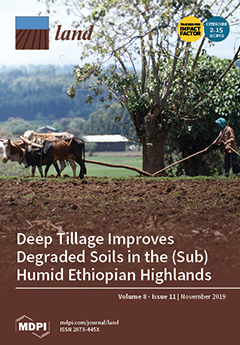Resource information
Intensification of rainfed agriculture in the Ethiopian highlands has resulted in soil degradation and hardpan formation, which has reduced rooting depth, decreased deep percolation, and increased direct runoff and sediment transport. The main objective of this study was to assess the potential impact of subsoiling on surface runoff, sediment loss, soil water content, infiltration rate, and maize yield. Three tillage treatments were replicated at five locations: (i) no tillage (zero tillage), (ii) conventional tillage (ox-driven Maresha plow, up to a depth of 15 cm), and (iii) manual deep ripping of the soil’s restrictive layers down to a depth of 60 cm (deep till). Results show that the posttreatment bulk density and penetration resistance of deep tillage was significantly less than in the traditional tillage and zero-tillage systems. In addition, the posttreatment infiltration rate for deep tillage was significantly greater, which resulted in significantly smaller runoff and sedimentation rates compared to conventional tillage and zero tillage. Maize yields were improved by 6% under deep tillage compared to conventional tillage and by 29% compared to no tillage. Overall, our findings show that deep tillage can be effective in overcoming some of the detrimental effects of hardpans in degraded soils.


